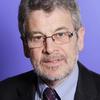Once a relatively marginal issue in the global health debate, in recent years the momentum towards support for Universal Health Coverage (UHC) has grown apace, as national governments and international organisations have been increasingly convinced of its importance. Both the WHO’s World Health Assembly and the UN General Assembly have been calling on countries to ‘urgently and significantly scale up efforts to accelerate the transition towards universal access to affordable and quality healthcare services.’ For the World Bank UHC is ‘key to achieving the …twin goals of ending extreme poverty and increasing equity and shared prosperity’, and as such is the driving force behind all of the Bank’s health and nutrition investments. In 2018 UHC remains a central issue for the World Health Organisation, and the priority of UHC was the core message of World Health Day in April, and also a key theme in the year’s World Health Assembly in Geneva.
Although UHC has achieved this central status in global health debates, a clear definition remains elusive. For WHO UHC means ‘that all individuals and communities receive the health services they need without suffering financial hardship. It includes the full spectrum of essential, quality health services, from health promotion to prevention, treatment, rehabilitation, and palliative care’.
UHC, says WHO, enables everyone to get health services addressing key causes of disease and death, and ensures that they are of good quality. WHO’s agenda for UHC is ambitious, aiming not just for a minimum package of health services, but ensuring a expansion of coverage as resources become available. UHC includes public health campaigns, and includes much more than just health. A UHC approach means ‘steps towards equity, development priorities, and social inclusion and cohesion’. What UHC does not imply, in WHO’s view, is free coverage for all possible health interventions, regardless of the cost, as – they say - no country can provide all services free of charge on a sustainable basis.
Notwithstanding the widespread support for the concept, the challenges to be faced in achieving UHC remain substantial. A global monitoring report by the World Bank and WHO from 2017 shows that half the world's population cannot access needed health services, while 100 million people are pushed into extreme poverty each year because of health expenses. In addition, 800 million people spend at least 10 percent or more of their household budget on healthcare expenses.
What does this mean for the world’s older populations, amongst whom it can be expected that health expenditures will form a large element of their expenditure? Last month’s World Health Assembly (WHA) gave us a sense of the impact that UHC could have for older people. Among the headline topics for discussion this year was the adoption of the WHO's 13th General Programme of Work, in which UHC is a key theme. The Programme of Work will guide what the WHO does over the next five years, and this is the first developed under Director-General Tedros Ghebreyesus, who was appointed last year. Early drafts of the strategy failed to include older people, or to highlight the changes needed within health systems to ensure an adequate response to population ageing. However, the version adopted at the WHA was much improved. It commits to supporting efforts to achieve healthy ageing, aligning with the strategic objectives in WHO’s Global Strategy and Action Plan on Ageing and Health (GSAP), which was adopted by the WHA two years ago, and positioning healthy ageing as central to UHC.
Also on the WHA agenda was a report on the progress made in implementing the GSAP. The WHO Ageing and Lifecourse Department's mid-term report details progress against 10 key indicators of the GSAP, and it includes some promising developments. For example, 112 countries now have a national focal point on ageing and health, while nearly half of Member States have a national policy on ageing and health. 88 countries have national legislation and enforcement mechanisms against age-based discrimination. The report also provides a baseline from which to measure further progress in the remaining three years of the strategy and beyond it to the WHO's decade of action on healthy ageing (2021-30).
While there is much to celebrate in these developments, which represent good progress,many challenges remain. For example, the Programme of Work includes a measurement framework for impact and accountability, based on a set of outcomes, which remains problematic. Thus outcome 1 aims for ‘strengthened health systems in support of universal health coverage without financial hardship, including equity of access based on gender, age, income, and disability’. While it is positive that age is specified, the measurement indicators are age-exclusive.For example, (and unlike the Sustainable Development Goals), the framework’s indicators on violence against women and non-communicable diseases (NCDs), propose age limitations of 49 and 70 respectively, which means that significant numbers of older people would not be included in data collection.
As my colleague Rachel Albone, HelpAge International’s health policy adviser, points out, WHO's narrow age-bracketed focus has been a concern for many years, which was not allayed by discussions in the discussion of non-communicable diseases at the WHA.The Director-General's report for the agenda item on the preparation for the Third United Nations High-Level Meeting on NCDs later this year heavily focused on so-called ‘premature mortality’ and reducing deaths from NCDs among people aged 30-70.This narrow focus risks excluding people over and under this age, and the language of ‘premature mortality’ suggests that there is an age at which it is acceptable to die. It is discriminatory, could lead to unequal service access, and gives space for ageism within health systems. There are real impacts of this approach. In the UK for example, women are only routinely called for screening for breast cancer up to the age of 70, despite one-third of cases of breast cancer occurring in women over this age.
The impact of the rhetoric of ‘premature mortality’ was clear during the WHA discussions. Close to 60% of deaths from NCDs occur in people aged 70 and over, yet only one Member State explicitly connected ageing and NCDs, while a large proportion talked about premature mortality. Strongly worded arguments have been made, urging WHO and Member States to move away from this discriminatory, narrow focus and instead to recognise people's right to health across the life-course. Only in this way will the ‘health for all’ strapline which WHO attaches to its UHC campaigning have real meaning.
About the Author
Mark Gorman is a Visiting Fellow at OIPA. He is Senior Policy Advisor at HelpAge International. For more information on social pensions around the world visit HelpAge’s Pension watch website.
Comments Welcome
We welcome your comments on this or any of the Institute's blog posts. Please feel free to email comments to be posted on your behalf to administrator@ageing.ox.ac.uk or use the Disqus facility linked below.
Opinions of the blogger is their own and not endorsed by the Institute
Comments Welcome: We welcome your comments on this or any of the Institute's blog posts. Please feel free to email comments to be posted on your behalf to administrator@ageing.ox.ac.uk or use the Disqus facility linked below.













